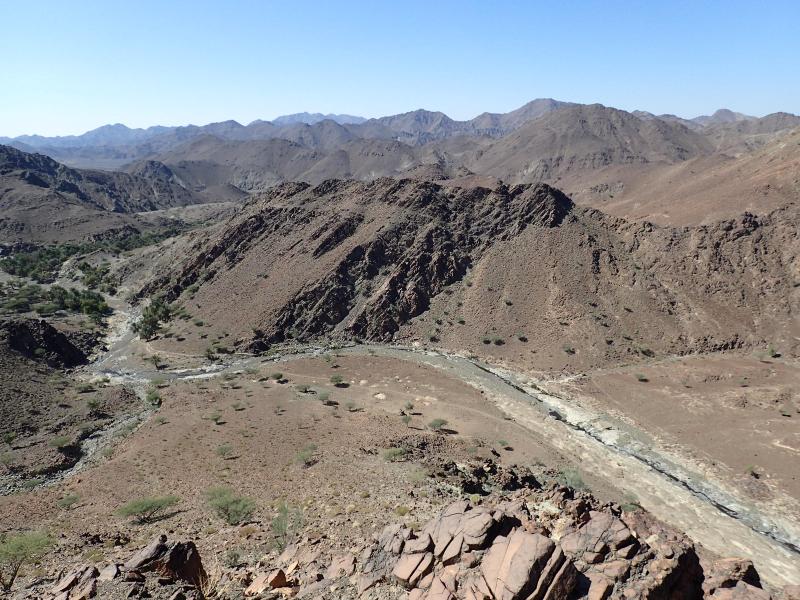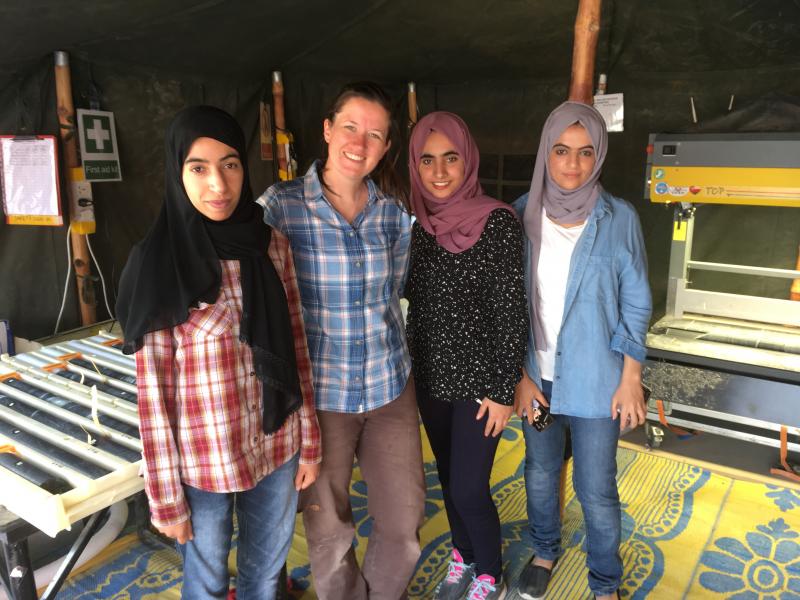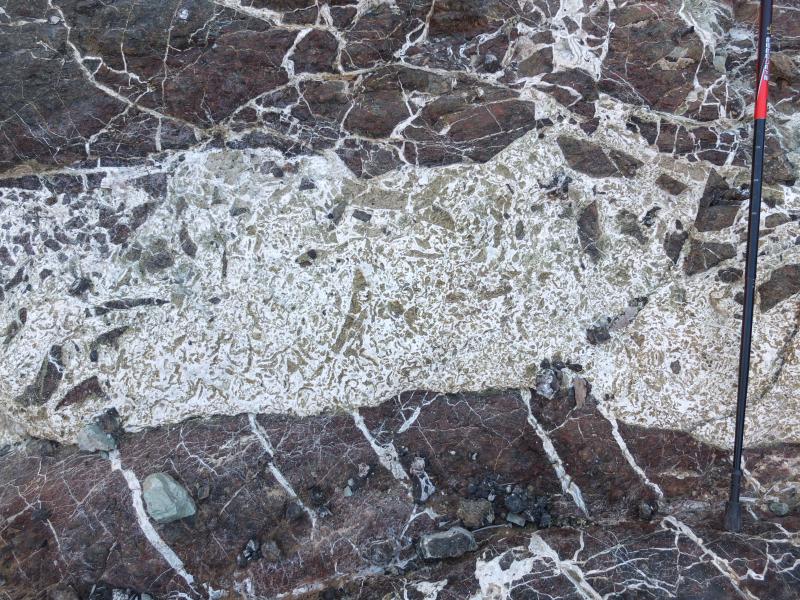About
Background
Two-thirds of Earth’s surface is made up of oceanic crust, which forms at mid-ocean ridges and is recycled into the underlying mantle via subduction at convergent plate boundaries. During each phase of its ~200 million year lifecycle the oceanic crust plays a key role in global geochemical cycles, including the carbon cycle. The inaccessibility of the present-day seafloor makes it logistically difficult to study. However, fragments of ancient oceanic lithosphere (crust + uppermost mantle) that have been tectonically emplaced on continental margins provide access to complete cross-sections of seafloor. These exposed sections of oceanic lithosphere are called ophiolites. The Samail Ophiolite, in Oman and the United Arab Emirates, is the largest, best-exposed section of oceanic lithosphere in the World.
The Oman Drilling Project (OmanDP) is an international scientific research project in collaboration with Sultan Qaboos University, Ministry of Regional Municipalities and Water Resources and Public Authority of Mining, Oman. Operations are funded by ICDP, IODP, NASA, NSF, ERC, Deep Carbon Observatory, JAMSTEC, Japanese Society for the Promotion of Science, Swiss National Science Foundation, and the German Research Foundation.
The OmanDP Science Party comprises 166 scientists representing 30 countries in five continents. These participants have dedicated their time to assist with operations on the drill sites in Oman, during detailed core description on the DV Chikyu or both. They are using the OmanDP datasets and samples to address a diverse range of scientific questions relating to the formation, hydrothermal alteration and biotic and abiotic weathering of oceanic lithosphere. After a fixed moratorium period samples and data will be available to the entire scientific community, upon request (see here for more details).
 |
| Overview of the transition from crustal to mantle rocks exposed in Wadi Nasif |
|
|
| Natural carbonate mineralisation of oceanic mantle rocks in Oman |
 |
| Omani trainees from the Public Authority of Mining onsite at BA4A, February 2018 |
Scientific Objectives
The overarching goal of scientific drilling in the Samail ophiolite is to understand the full spectrum of processes that create and modify oceanic crust and shallow mantle, involving mass and energy transfer between the mantle, the crust, the hydrosphere, the atmosphere and the biosphere over a range of temperatures from ~ 1350 to 20°C, depths from the surface to 10 or 20 km below the paleo-seafloor, and tectonic settings from spreading ridges to the deep ocean to surficial weathering to subduction zones.
The Oman DP will address long-standing unresolved questions regarding formation of oceanic lithosphere at mid-ocean ridges, hydrothermal alteration of the sea floor and subsequent mass transfer between the crust and the oceans and recycling of volatile elements in subduction zones. Furthermore, the science team will undertake frontier exploration of subsurface weathering processes that lead to natural uptake of CO2 from surface waters and the atmosphere, and the nature of the subsurface biosphere in areas where these processes are occurring.
The scientific objectives are to:
(1) Quantify the nature and timing of solid upwelling beneath a spreading ridge using crystal shape and lattice preferred orientation data systematically collected on core from the periphery of a mantle diapir.
(2) Quantify the nature and structural relationships of melt transport features in the shallow mantle, to evaluate mechanisms that focus transport from a melting region 100’s of kilometers wide into a zone 2 kilometers wide where igneous oceanic crust is formed.
(3) Quantify chemical variability deformation structures in the crust-mantle transition zone and plutonic lower crust, to determine the depth of crystallization, the nature of ductile flow, and mechanisms of melt transport.
(4) Quantify hydrothermal alteration and cooling of the plutonic lower crust using mineral compositions, diffusion profiles, and stable isotopes to determine the importance of hydrothermal convection in heat and mass transfer.
(5) Investigate processes in the critical “dike-gabbro transition” via study of cross-cutting igneous relationships, metamorphic mineral assemblages, and geochemical alteration.
(6) Quantify mass transfer from subducted sediments into overlying peridotite at the “leading edge of the mantle wedge” via petrologic and geochemical studies, with special focus on carbon cycling.
(7) Systematic and detailed study of ongoing, subsurface alteration of mantle peridotite, including fluid compositions, flow rates and hydrology, characterization of fracture and vein spacing, studies of mineral assemblages formed by carbonation, hydration (serpentinization) and oxidation and resulting mass transfer, and characterization of the subsurface microbial biosphere that derives energy from catalysis of low temperature alteration in this unique and fundamentally important environment.
Impact
The Oman DP includes the involvement and training of international university students in Earth Science research, including numerous students from Sultan Qaboos University, Oman and the German University of Technology in Oman.
Studies of the natural system of mineral carbonation in peridotite are likely to contribute to the design of future engineered systems for geological carbon dioxide capture and solid storage.
This project will contribute to the understanding of microbial ecosystems in extreme environments and the origin of life on Earth.
The study of altered oceanic lithosphere will provide new data relating to the mass transfer, concentration and precipitation of elements in oceanic lithosphere, leading to improved understanding of economic mineral deposits.

